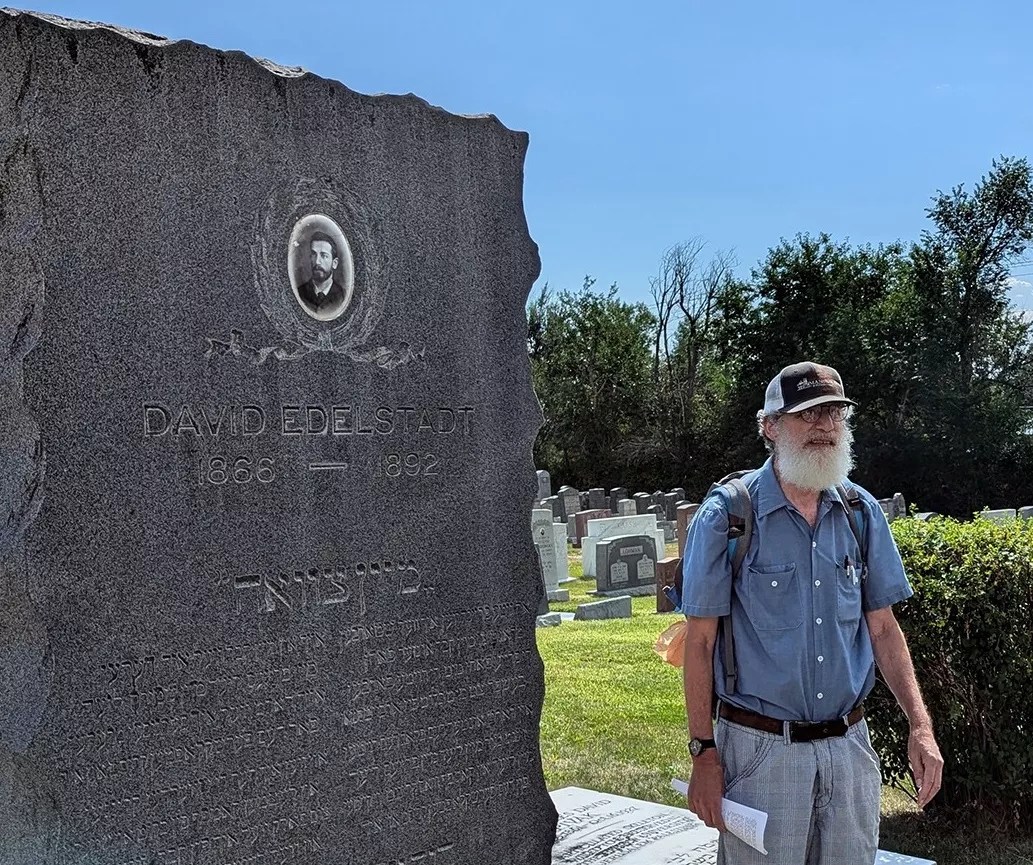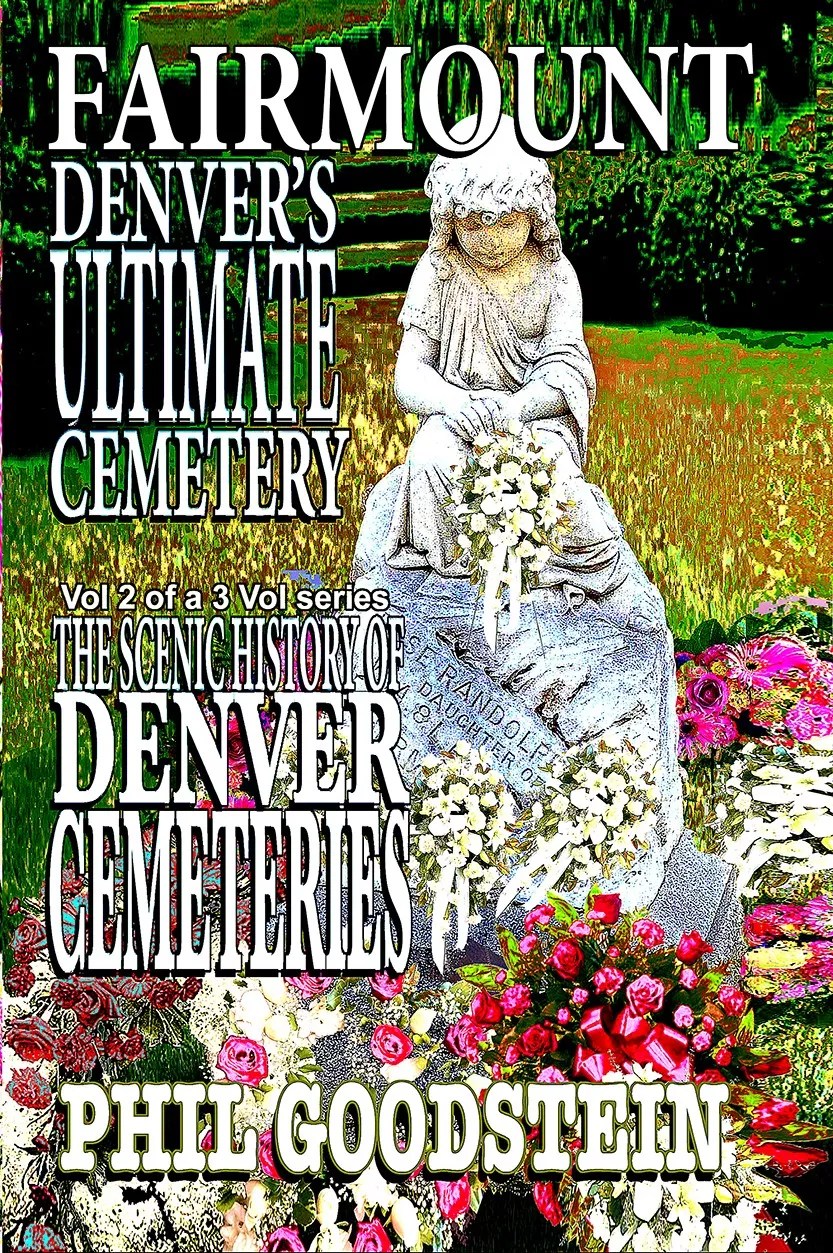
Phil Goodstein

Audio By Carbonatix
Phil Goodstein is one of Denver’s most popular historians, not to mention one of its favorite tour guides. His takes on different sections and eras of the city are some of the constants of local literary history, on perpetual display at local booksellers such as Capitol Hill Books and West Side Books. And for good reason: They’re chock-full of legends.
Goodstein’s latest tome, Fairmount: Denver’s Ultimate Cemetery focuses solely on Fairmount Cemetery, founded in 1890 and Denver’s second oldest after Riverside. Situated at the intersection of south Quebec and Alameda streets, its sprawling 280 acres boast several historic Denver landmarks, including the largest stained glass collection in Colorado, the state’s most extensive arboretum, a state-designated wildlife viewing area and one of the most extensive plantings of Heritage Roses in North America. It’s home to the Ivy Chapel, old as the cemetery itself, an architectural tribute to thirteenth-century Ecclesiastical Gothic architecture with flying buttresses and gargoyles right in the heart of the Mile High city; the 1930s Mausoleum with its storied stained glass; the 1941 Chapel in the Pines, an English Gothic revival building built to accentuate the providential sunshine of Colorado; and much more.
There’s a reason, after all, that Fairmount deserves a book until itself. We sat down with Goodstein to talk about the historic cemetery at the center of it all.
Westword: Give us the elevator pitch for a book like this one. Why should people read about a city cemetery, anyway?
Will you step up to support Westword this year?
At Westword, we’re small and scrappy — and we make the most of every dollar from our supporters. Right now, we’re $21,000 away from reaching our December 31 goal of $50,000. If you’ve ever learned something new, stayed informed, or felt more connected because of Westword, now’s the time to give back.
Goodstein: As is the case with most local history, the story of Denver’s past is often nothing more than antiquarianism. Missing is a crucial edge connecting the past and the present. A clue to the connection is found in cemeteries. They reflect on how the living treats the dead. Monuments to the deceased show both the values of past generations and the concerns of the present.
Cemeteries are crucial to understanding communities. They were among the first institutions formed in new settlements. Explaining how Fairmount emerged as Denver’s premier burial grounds and its links to the living community are prime goals of Fairmount: Denver’s Ultimate Cemetery.
This is the second part of a series, correct?
Originally, what became the book was to be a lengthy section in a one-volume overview of the city’s burial spots. The more I looked at Fairmount, the more the book grew whereby the project became a three-volume effort. The first part, The History of Scenic Denver Cemeteries: From Cheesman Park to Riverside, deals with early abodes of the dead. The third book, tentatively entitled The Denver Book of the Dead: Jewish Cemeteries, Mount Olivet, Crown Hill, Fort Logan, will complete the story.

Phil Goodstein
Why do you content Fairmount is the apex of Denver cemeteries? Is it just its long history, or is there more to it than that?
Almost from the time Fairmount was organized in 1890, it had a special élan. Within ten years of the time it interred its first bodies in early 1891, it was something of the necropolis of the Mile High elite. Not only has it continued that tradition, but it also has numerous subsections. Present is the Ku Klux Klan, the civil rights movement, trade union militants, politicians, and killers and con-men. A city of the dead is like a city of the living, a place divided by class, wealth, and racial and religious differences. Fairmount illustrates all of this.
How has our relationship with cemeteries changed over the years? Do you find those changes for the better or the worse?
When I originally started giving cemetery tours around 1987-88, the cemeteries either encouraged me to do so or generally ignored me. In some places, that is still the case. Fairmount has shown a provincialism and insecurity by banning independent tours of the place. In the process, it alienates rather than encourages community appreciation of the place.
So how is Fairmount doing, in terms of preservation?
Fairmount is a private institution. At times, it flaunts this even while it receives city water while being treated as a non-profit institution. The real question is whether Fairmount owes the city more, particularly with Fairmount’s shameful neglect of Riverside Cemetery, a place for which it is responsible.
Do you have a favorite story from the book?
George Pettibone rests under a huge memorial with the declaration, “It isn’t the fact that you’re dead that counts, but only, how did you die?” He was a revolutionary socialist who had fought mine owners. In 1906, the mine owners, in collaboration with the states of Idaho and Colorado, the Pinkerton Detective Agency, and local authorities, kidnapped Pettibone for plotting the assassination of a former governor of Idaho. This led to a Supreme Court ruling upholding such conduct. It also set the stage for a most memorable American labor struggle and political trial.
Any surprising details you dug up about Fairmont in the process of writing this book?
Do you want to dig up things at cemeteries? Or is the whole point to bury them? I did not realize the scope of some of the newer sections of the necropolis. Likewise, I was greatly impressed by the museum quality of the Mausoleum as an art gallery.
Are you running out of spooky stories from Denver history to write about, or is the city in that sense the gift that keeps on giving?
What do spooky stories say about a community? Do people seek them out because the present is so drab? Are they generic where ghost stories are but Hollywood clichés? Or do they reflect on uncomfortable truths? At Fairmount, for example, there is not only the memory of George Pettibone, but there is also a mausoleum to KKK kingpin John Galen Locke. The latter is close to the grave of John Chivington, the man most responsible for the Sand Creek Massacre. As such, “spooky” stories are actually community memories and reflections on how past and present values come together in shaping popular consciousness.
Phil Goodstein’s Fairmount: Denver’s Ultimate Cemetery is available for purchase now. Goodstein will do a book talk and signing at the Denver Public Library on Saturday, January 25, 2025.